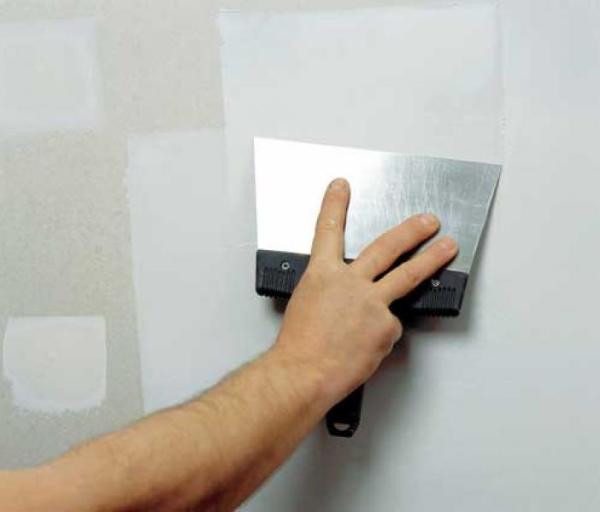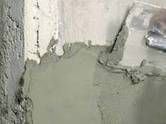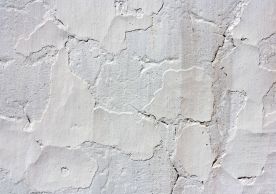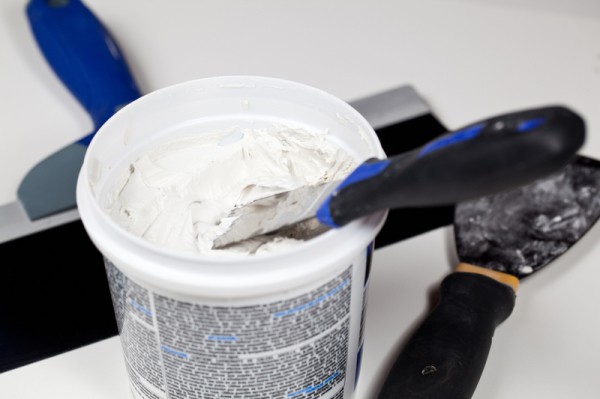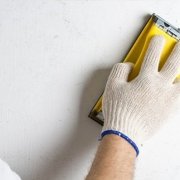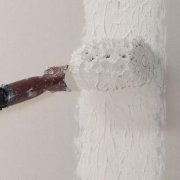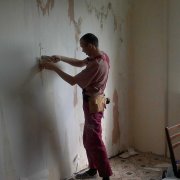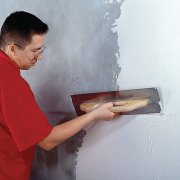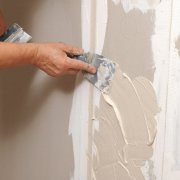Puttying: materials and quality control
The cost of puttying completely depends on their volume and the material used. You also need to know how to check the quality of the putty, because if you do not do the work yourself, then you need to check what you have done and what quality.
Also, the cost of puttying the walls will depend on the material used. After all, they work with them in different ways.
It’s worth watching the video in this article and it will help you fully understand the whole principle of work and choose the right material. After all, the price of the work will depend on it.
The content of the article
Types of putties
Puttying the cost of work will depend on the types of putty. After all, you can do the work with cement mortar and this is not an easy job. But you can apply and just a dry mixture. So let's first look at the types of this material.
Phase Classification
The cost of the work putty on the walls will depend on the preparation of the material. It is one thing when ready-made material is brought in and quite another when it takes time to prepare it.
So:
- Fully dry putty is sold in bags or sacks. It has all the necessary properties and components in undiluted form.
This putty is very convenient to store and transport. The shelf life of dry putty far exceeds the shelf life of the finished mixture. Despite the low cost, in terms of its characteristics, it is in no way inferior to ready-made mixtures. - The advantage of the finished putty is that it is already diluted in the right proportions and you do not need to bother with the preparation of the solution. But such a putty is not very convenient to transport, because it is stored and transported in banks or buckets. In addition, the cost of finished putty exceeds the cost of dry putty by an order of magnitude.
Destination classification
Types of putty for interior work are also different. And the price of work depends on this. It’s cheaper to finish in two layers. Much more expensive if you need to do multi-layer wall alignment.
| Leveling putty | It is intended for primary processing and leveling of the surface before applying the base layer. This putty allows you to fix planning defects and eliminate minor flaws. High-quality leveling putty completely eliminates the occurrence of cracks and rapid shrinkage. |
| Putty of the second layer | This type of putty is applied at the final stage. wall decoration. It is characterized by a high degree of compatibility with the lower layer of putty. This eliminates delamination. In addition, it should be smooth, without grooves and potholes. |
| Specialty Putty | Designed for specific finishing purposes. As a rule, information about the purpose of specialized putty is indicated on the packaging. Universal putty allows you to use it instead of all the above types. I must say that it is silently inferior in quality, but more expensive. |
Classification by type of binding components
Putty for interior work is of different compositions. There are three types of materials that serve as the basis for such putties. These are polymers, gypsum and cement.
| Cement putty | It has increased resistance to moisture. The disadvantage is the possibility of microcracks. |
| Gypsum putty | It tolerates extreme temperature and humidity. This putty should not be used for bathroom finishes, bathrooms, etc. |
| Polymer putties | They surpass cement and gypsum putty in their properties and qualities. I must say that the cost of such putty is three times more expensive than the rest. |
Caution: Putty for external work should include components that tolerate high humidity and temperature extremes. Putty for street work must meet these parameters.
So:
- All of these putties contain components such as carboxymethyl cellulose that increase water resistance. As a rule, the conditions and place of use of the putty are indicated on the factory packaging. Before starting repairs, always carefully read the instructions.
- The dispersion of the putty particles is selected taking into account the composition of the walls. For wooden walls, putty with fine particles (200 microns) is perfect.
- Sand-clay walls and masonry are better in contact with fine particles (15-20 microns in section), and walls made of artificial materials - with medium ones (50-80 microns).
Attention: The existing variety of putties greatly complicates the choice. It is very difficult to choose the right one without making a mistake. Even if you consider yourself a specialist in finishing work, it is better to re-read the above information once again, because the putty is regularly changed and updated.
How to determine the quality of putty
The quality of the putty should be determined before the start of work or at their initial stage. In this article, we will tell you how to do it.
Poor putty can be detected in the following situations:
- In the process of mixing the putty, it absorbs too much water and dries quickly. This is a signal to replace dry building mix with “normal”.
- In the process of mixing, an inhomogeneous composition is obtained, in which there are large particles. Sometimes low-quality putty is generally taken in lumps.
- Putty applied to the surface dries too quickly (especially around the edges).
- In the process of applying to a well-primed surface, it rolls up and does not adhere well.
- When stripping, putty pours out in parts.
- In the process of priming the putty and the cleaned surface, the putty is simply “wound on a roller”. If you did everything in accordance with the technology, then clean off poor-quality material and repack.
- After proper primer (without exceeding the norm), the putty dissolves, forming a large number of hollow spots.
- In the process of painting, the putty is inflated or wound on the roller together with the paint (if you wait until the material has completely dried).
- The mixture has a yellowish tint.
We do not wish anyone to face one of the above situations, but anything can happen in life. Therefore, it is better to contact professional finishers. Even if they do not know how to correctly determine the quality of the putty before starting work, then they will understand and correct the flaws in any case.
How to check the quality of plaster
In those cases when you need to achieve a perfectly flat surface for painting, there is a need for plaster. The plastering process allows you to adjust the geometry of non-ideal room angles. A strong foundation is the key to durability of the plaster.
So:
- Before starting work, it is recommended that you clean the old coating to a solid foundation. So the new coating will last much longer.
- A slight deviation of the plastered surfaces horizontally and vertically is allowed.
- The maximum permissible deviation should not exceed 5 mm per meter. The horizontal deviation limit shall not exceed 2 mm per meter of plastered surface.
- The presence of one or two irregularities of smooth outlines with a depth of not more than 2 mm per meter of surface characterizes the high quality of plastering.
- The same clear requirements are placed on the quality of window and door slopes. According to SNiP 3.04.01 - 87. Tab. 9, the maximum vertical deviation should not be more than 5 mm along the entire length of the element.
Professional finishers create very high-quality stucco and do not allow deviations horizontally and vertically in excess of 1-2 mm per meter. Therefore, when checking this type of work, one should not forget that the maximum permissible design flaws are fixed in SNiP.
- According to SNiP 3.04.01 - 87. Table 10, the thickness of any single-layer plaster (except gypsum) should not exceed 20 mm. In the process of creating a coating of gypsum mixtures, this indicator should be no more than 15 mm.
- Multilayer plastering should be carried out in several stages. Drying of each layer under the conditions of the correct humidity and temperature helps to prevent cracking and “blooming” of the surface.
- Most builders perform this type of work at a time, with a violation of technology. They immediately put on the estimated thickness of the coating. This very often causes cracking of the finished surface.
- The quality of the plastering work must be checked no earlier than 3-4 weeks after their completion.
Puttying is not such a difficult task. On our site you can find many articles on this topic and there is a detailed instruction on how to do the work.
You can also see the photo. But if you order masters, then you should remember that the more labor for preparing the material will be expended and the more layers will be applied, the more expensive this work will be.
